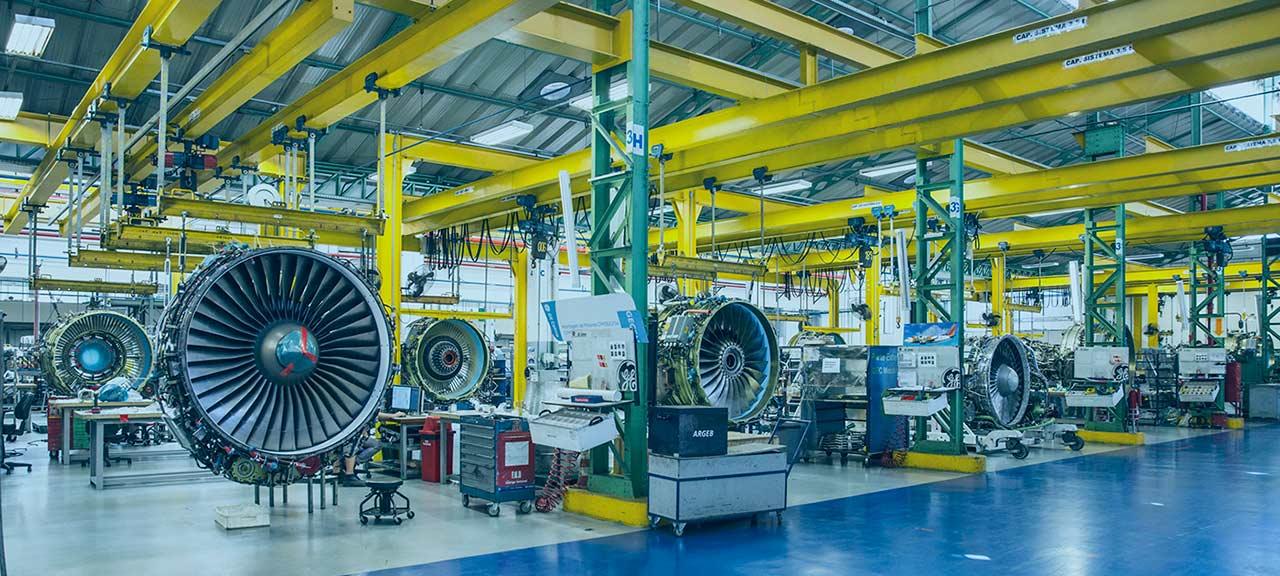
Before the coronavirus pandemic hit, the engine overhaul segment was as strong as any vertical market in commercial aviation.
Most shops were booked for months, and used parts were hard to find for many platforms—an added boost for new-parts suppliers. Because of that momentum, the pandemic’s near-term ramifications on the engine MRO segment are only now beginning to come into focus. The picture is not pretty.
GE Aviation reported global shop visits for its family of engines, including CFM56s produced under its 50-50 joint venture with Safran, were down low-double-digits in the 2020 first quarter (Q1). Not bad, but it’s getting worse, quickly. Early second quarter (Q2) trend data has GE/CFM global shop visits—which totaled 5,400 for all of 2019—falling 60% year-over-year.
The reason is simple: the less an aircraft flies, the less often it needs work. For OEMs and major service providers, it translates into either less cash now, or waiting longer to get paid.
Engine OEMs are fond of long-term agreements, where operators pay fixed amounts to keep engines on-wing. Not all agreements are the same. For instance, CFM offers engine service per flight hour (ESPH) and engine service per overhaul (ESPO) deals. Both offer operators the same basic benefit: predictable costs over the contract’s life. The primary difference: ESPH deals are paid on a per-flight-hour basis, while the ESPO payments are made at the time of each shop visit.
GE is projecting a 50% drop in long-term agreement revenue for Q2—which would imply fleet activity roughly half the level of 2019’s comparable timeframe. While a major drop-off, many airlines would take that level of demand right now—GE’s own figures show total CFM-powered departures have been down about 75% year-over-year for the last several weeks.
Still, it is not enough to keep GE’s in-house shops humming. The company is trimming its global workforce—aftermarket and new-engine production—by up to 25%, or 13,000 jobs, in 2020, including both voluntary and involuntary cuts.
GE stands out as the largest engine-services provider, but it is hardly alone. Safran has cut staff, Pratt & Whitney entered the year with plans to trim workers even before the pandemic evolved, and Rolls-Royce is reportedly eyeing reductions.
The commercial aftermarket recovery’s pace and strength remain anybody’s guess. The engine MRO world faces a few wrinkles that will have little influence on anything outside of their business, however. One is the used serviceable materials (USM) market. As airlines determine what stays grounded and what flies, parts with life left in them on aircraft headed to the boneyard will be in demand. This should help operators save money, but will cut into new-parts sales, and potentially engineering repair revenues.
A related, but potentially larger issue: keeping used parts in service but off the market. Airlines with larger, owned fleets present more of a wild card. If a carrier decides to park a fraction of a sub-fleet, they have the option of pulling parts off of sidelined assets to keep their in-service fleet flying. In this scenario—“the scary one,” as the head of one used-parts supplier puts it—nobody makes money.
But as airlines get increasingly conservative on engine-MRO spend, from seeking out new-parts alternatives to delaying some overhaul work, suppliers will benefit. Steering away from new parts will present opportunities for USM traders and, potentially, parts manufacturer approval providers.
Deferrals would benefit overhaul shops, which measure two primary metrics: shop-visit volume, and value of materials consumed during each visit. Airlines paying on a per-visit basis outside of a long-term contract—the so-called time-and-materials approach—can try to limit expenses by opting for the bare minimum at each visit. But that does two things: it pulls forward the engine’s next induction and it means anteing up for the fixed costs, such as replacing the removed engine with a leased engine, that much sooner. Over time, the airline trades higher total cost for more manageable cash flow, and the suppliers benefit.
“At the end of the day, if you cut [an engine overhaul] in pieces, it’s going to cost you 20% or 30% more than if you can do it at once,” said Safran CEO Philippe Petitcolin. “You are going to do a full shop visit over a period of 18 months, two years, but you will have to do it. When it’s time, it’s time, and nobody plays with that.”





